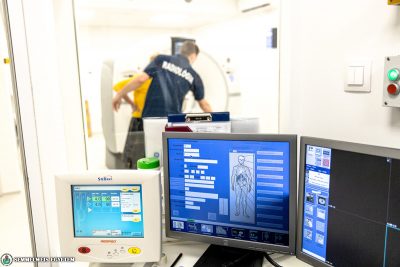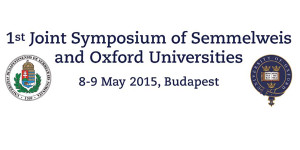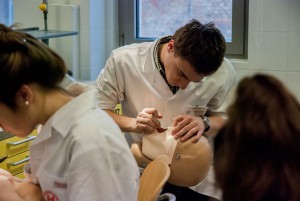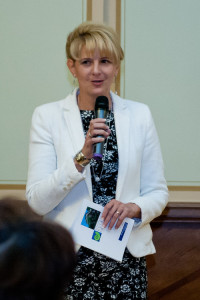 “Legal and administrative procedures dominate the first year. However the identification of research programmes eligible for funding within the framework of the consortium, realised by the project of EIT (European Institute of Innovation and Technology) will start as well”, said Balázs Fürjes, president of EIT’s InnoStars group and representative of Semmelweis University at a press conference in February. He emphasized the importance of colleting project ideas before 2016, when the submission of applications can be started, as good ideas might be embedded in the business plan.
“Legal and administrative procedures dominate the first year. However the identification of research programmes eligible for funding within the framework of the consortium, realised by the project of EIT (European Institute of Innovation and Technology) will start as well”, said Balázs Fürjes, president of EIT’s InnoStars group and representative of Semmelweis University at a press conference in February. He emphasized the importance of colleting project ideas before 2016, when the submission of applications can be started, as good ideas might be embedded in the business plan.
As we previously reported, Semmelweis University became a member of Europe’s biggest medical research, development and innovation co-operation. The winning consortium of the EIT Knowledge and Innovation Community’s (KIC) project encompasses the most prestigious universities of Europe. The Hungarian members of this new innovative group are Semmelweis University, the University of Debrecen, GE Healthcare and the National Institute for Quality- and Organizational Development in Healthcare and Medicines (GYEMSZI).
The main areas of focus of EIT Health KIC are healthy brain, cardiovascular diseases/metabolism/diets, oncology, big data/smart data, high-tech systems, autonomy, healthcare and ageing, management of chronic illnesses, ethical aspects of healthy lifestyle and active ageing. Semmelweis University plays a fundamental role in the management of KIC, as Dr. Lilla Farkas, director of the Innovation Centre was appointed the head of business development of InnoStars.
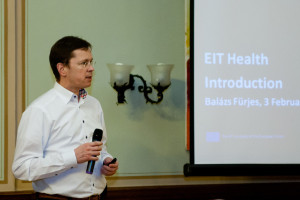 Balázs Fürjes pointed out that the principles of EIT are to make ideas become products, to get them from the laboratories to the markets and to become an entrepreneur from a PhD student. EIT launches 7-year programmes in different thematic fields, which are financed in 25% by EIT.
Balázs Fürjes pointed out that the principles of EIT are to make ideas become products, to get them from the laboratories to the markets and to become an entrepreneur from a PhD student. EIT launches 7-year programmes in different thematic fields, which are financed in 25% by EIT.
The most important aspect of the programme is to encourage enterprises to use university facilities for their research, and to urge universities to be responsive towards the needs of enterprises and help the ideas become real products on the market.
Currently, the organisation comprises 154 members which are structured into 6 “co-location” centres and the InnoStars regions operating besides these centres.
Balázs Fürjes said that by the application of a special project selection method, the most important topics, the best projects and the most outstanding researchers can be chosen without having to deal with the issue of overlapping. The organisation of the consortium had taken two years, the application was submitted in September and the results were announced in December. The researchers of Semmelweis University will be able to join the programmes via the Innovation Centre, therefore their suggestions regarding research topics should be first conveyed to the Centre’s staff.
Pálma Dobozi
Translated by: Ágnes Raubinek
